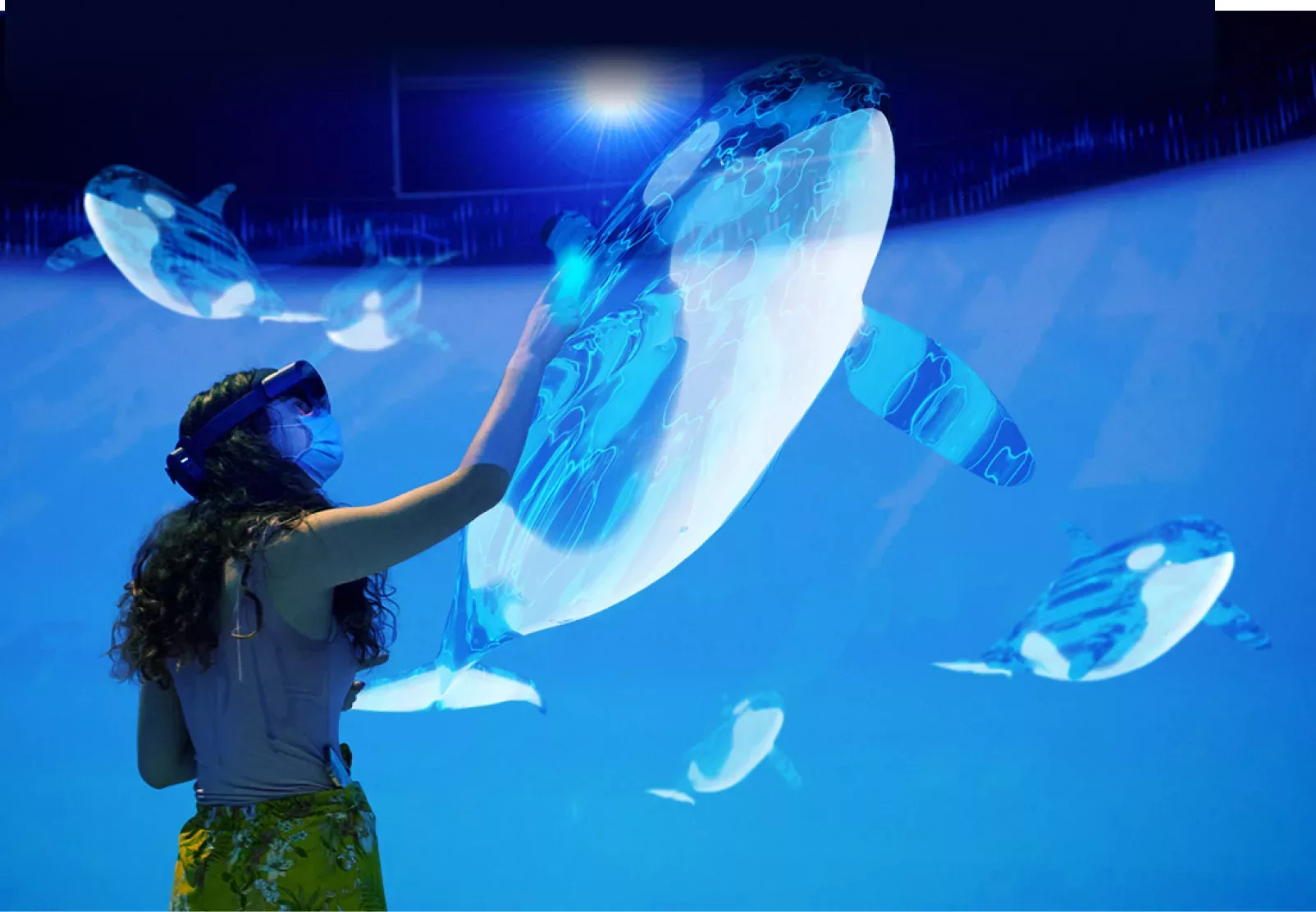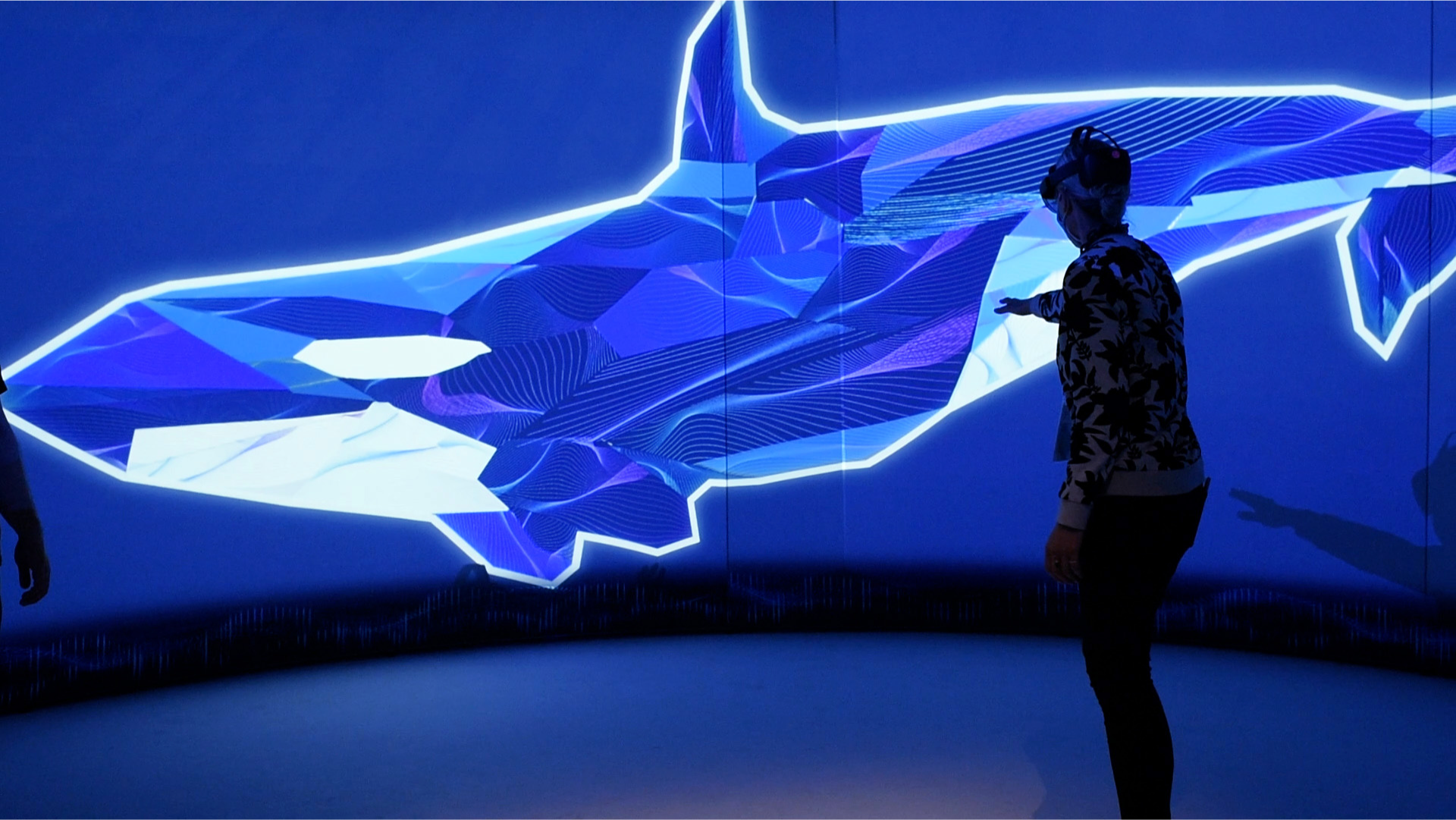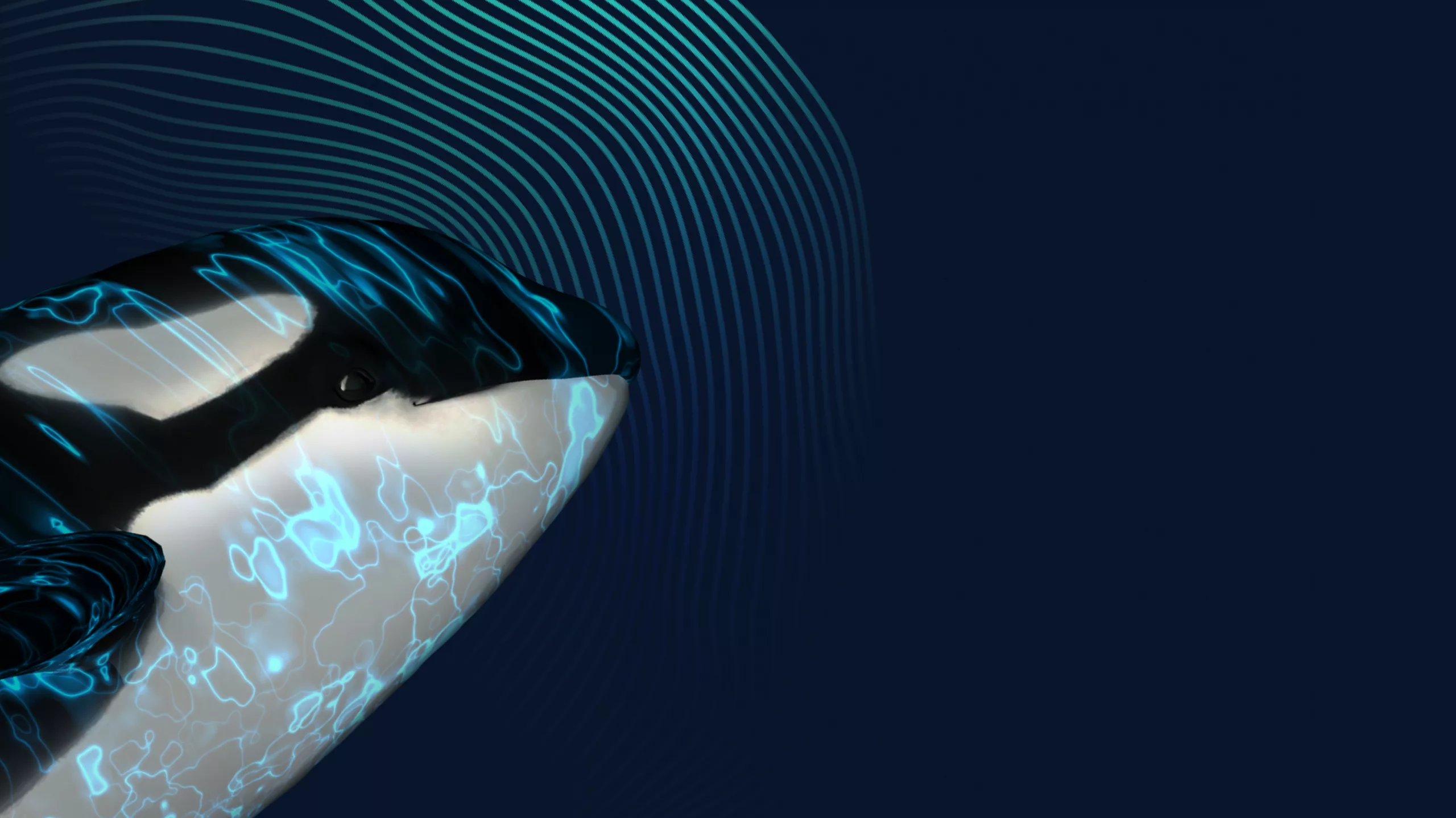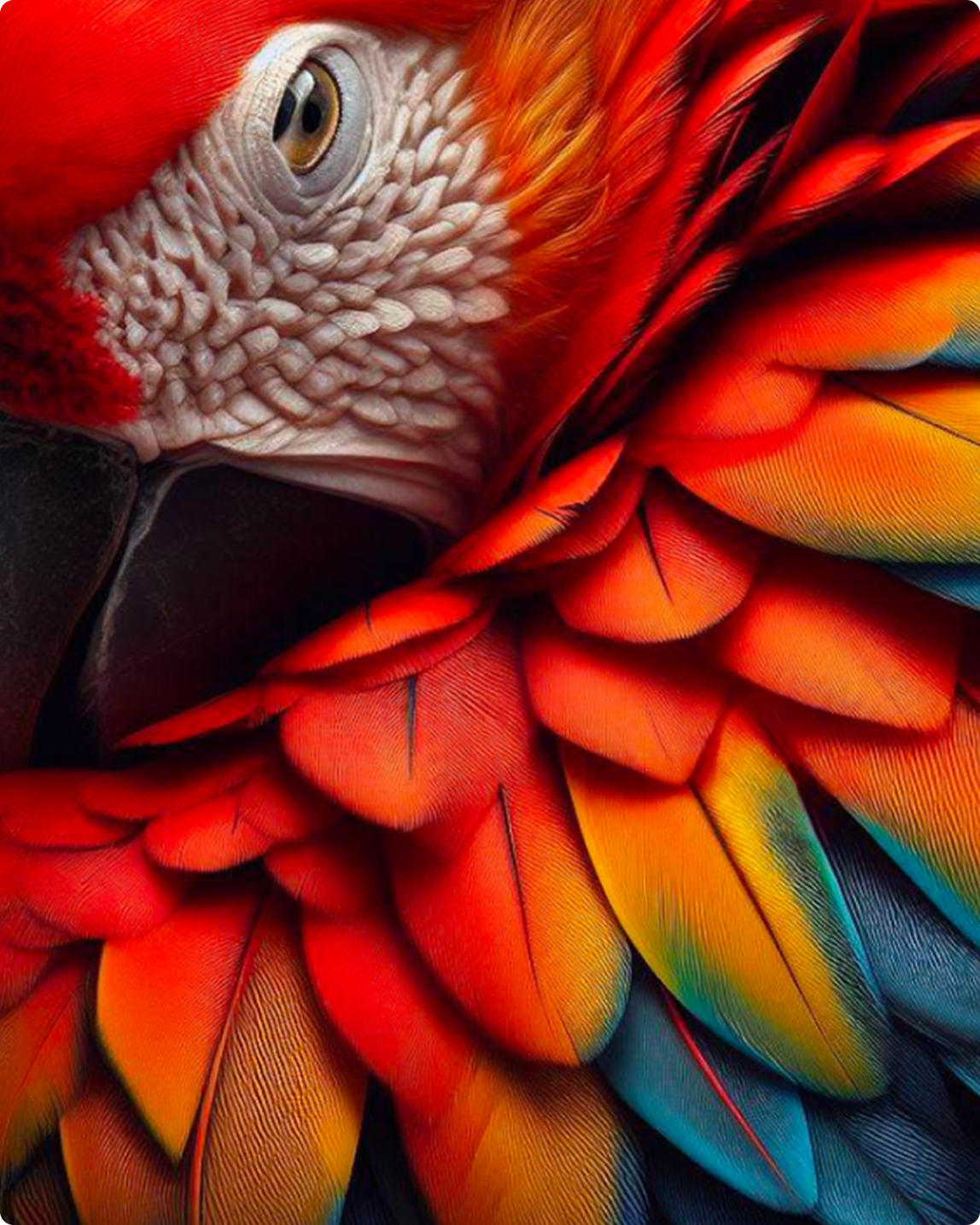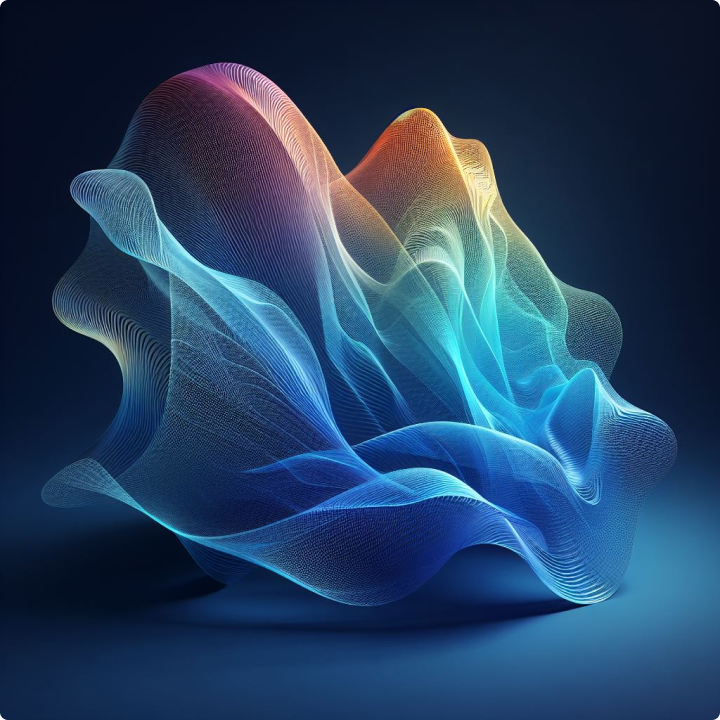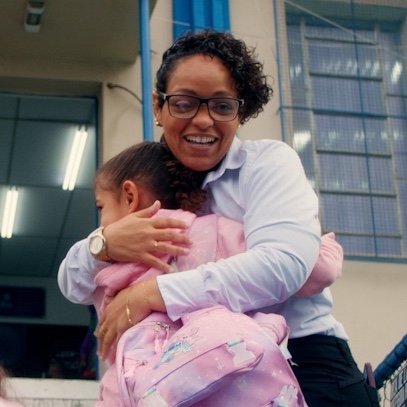The sound of survival
Just below the surface of the Salish Sea, where Washington meets Canada, you’ll find a family of orcas known as J-pod that’s lived in Puget Sound for thousands of years. Among them is Kiki, the youngest female of the pod. After losing her mother and sister, Kiki faces a stark reality—she may never grow old enough to have calves of her own.
The future of J-pod is more uncertain than ever. And the culprit is us—manmade noise pollution that interferes with their ability to connect with each other.
The Southern Resident orcas are a very, very tight-knit family. If anyone has ever seen them… It’s magical. It takes your breath away.
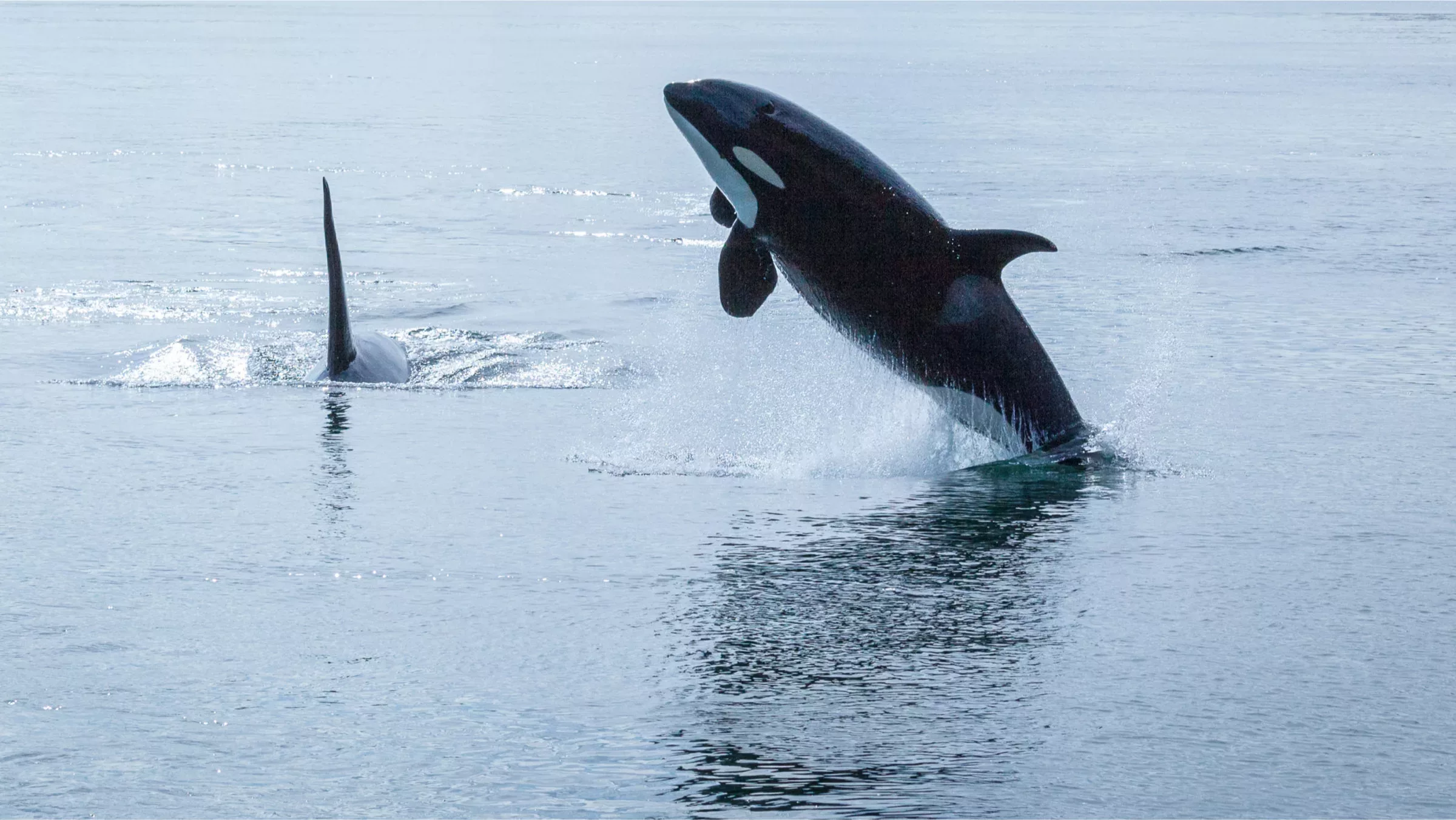
As humans, we share a lot in common with orcas. They have personalities and family bonds that last a lifetime. They gather in joy for birth and mourn together in death.
They even have their own language of clicks and calls, and use echolocation to “see” sound. But Kiki’s family speaks its own orca dialect. J-pod vocalizes—without scaring away the salmon, of course.
For Kiki and her family, sound is pollution. With bustling port cities like Vancouver and Seattle surrounding Puget Sound, engine noise from ships echoes all the way down to the sea floor, drowning out their vocalizations and driving them to change their natural foraging and feeding habits.
As international shipping continues its rapid rise, the orcas are in decline. With 81 Salish Sea orcas missing or dead since 1998, J-pod is now down to 25 whales. But with two healthy calves born in 2020 and a new baby female calf born in 2022, local whale researchers and the Lummi Nation are holding out hope that it isn’t too late to ensure a future for Kiki and her family.
Once an apex predator like the orcas vanishes forever… the whole food web will unravel here.
Enter filmmakers Adam May and Amy Zimmerman, who created an immersive experience called Critical Distance, telling the story of J-pod in hopes of helping Kiki.
With Microsoft’s HoloLens, Amy, Adam, and the Vision 3 team saw a chance to turn the tide. In it, they found a tool that helped us to connect with Kiki’s story and world in a whole new way. To experience listening the way Kiki does. To witness the Salish Sea as orcas do. To see exactly how we’re impacting J-pod, the salmon they eat, and the thousands of habitats that will go silent if they do—and stir us into action.
Critical Distance, at once visceral and tangible, is a shared experience that immerses us and our fellow humans alongside holograms of the last Southern Resident orcas, showing us what it’s like to swim with Kiki and her pod, touch her skin, and feel the hearing loss she experiences when boats pass overhead.
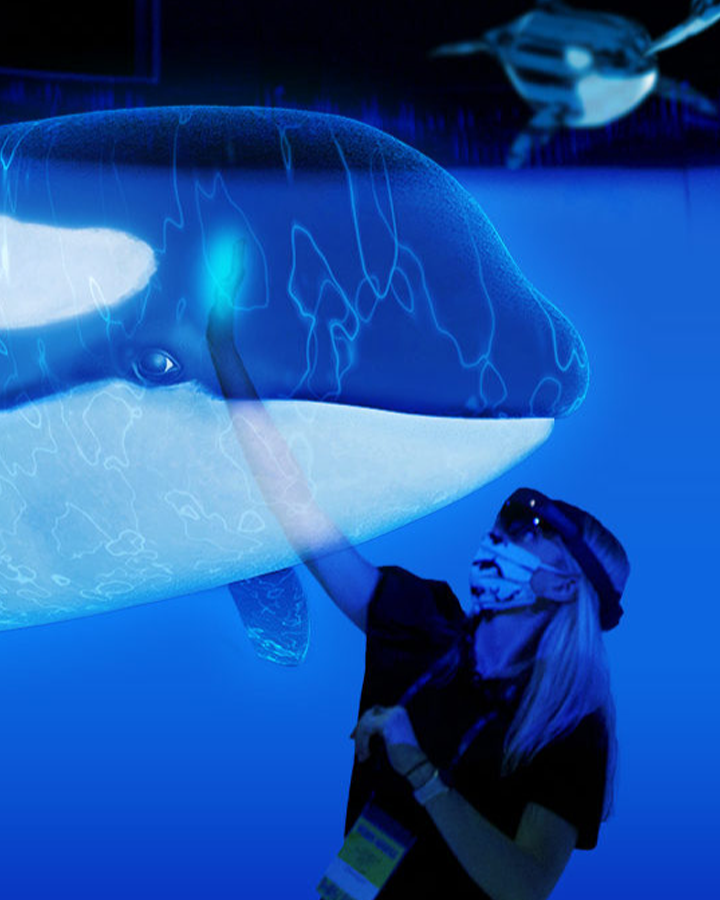
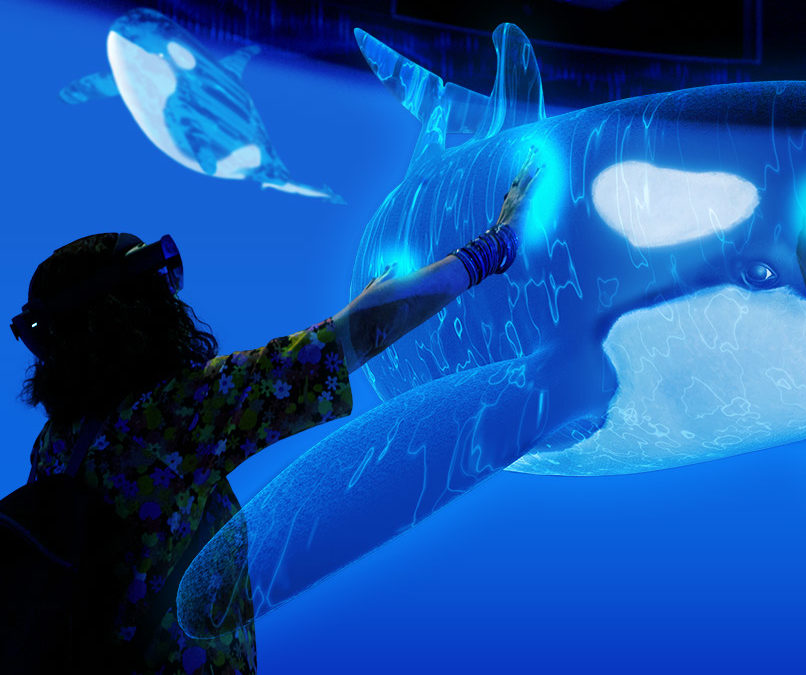
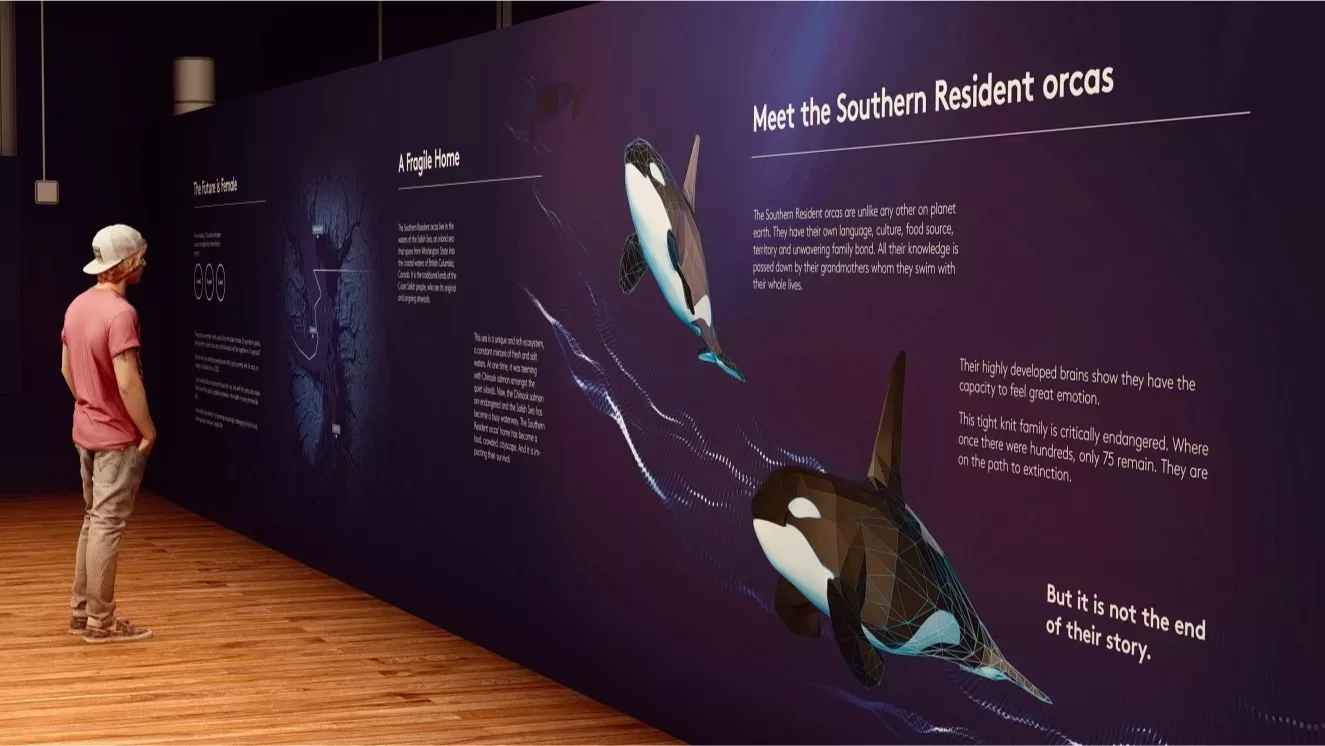
It also shows us how human inventions can change the world in countless unexpected ways, connecting us to each other and the natural world around us. Yes, sounds we can’t even hear can throw whole ecosystems off balance. But our technology also offers us a chance to listen to what our oceans are trying to tell us with an important reminder: the time to act is now.
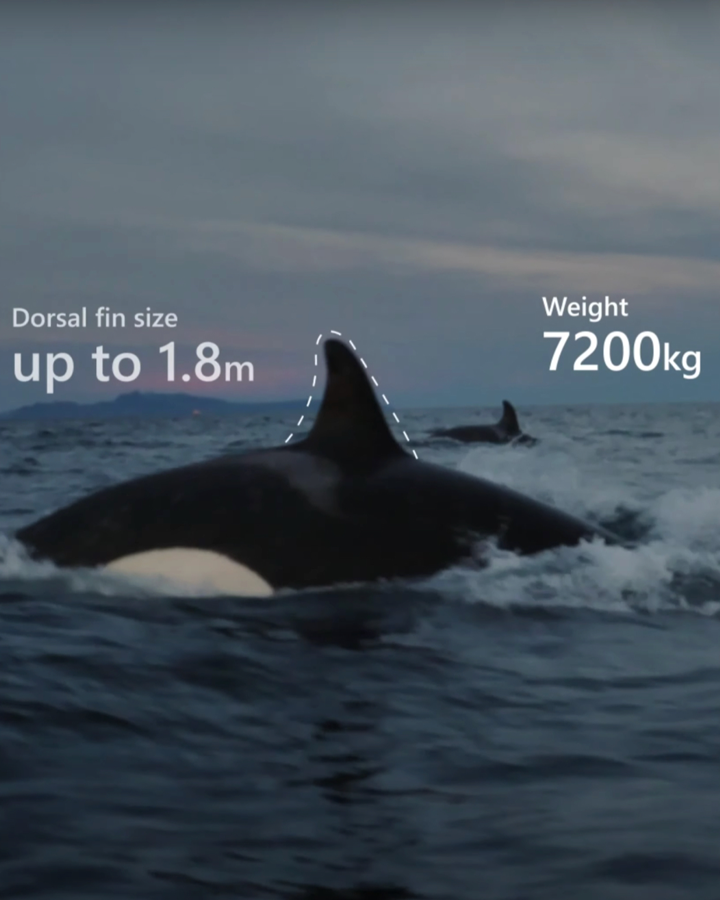
Using AI to protect the pods
Learn about ways other conservationists are using technology to help protect the orcas.
Tracking the threat of noise pollution
Scientists are using AI to listen to the underwater sounds of the Salish Sea, providing real-time data that helps them monitor orca movements and the effects of noise pollution in the Pacific Northwest.
Building an orca health database
Find out how the Killer Whale Health Database, a resource created and powered by AI, is helping scientists work together to respond quickly to threats impacting the health of orca populations.
